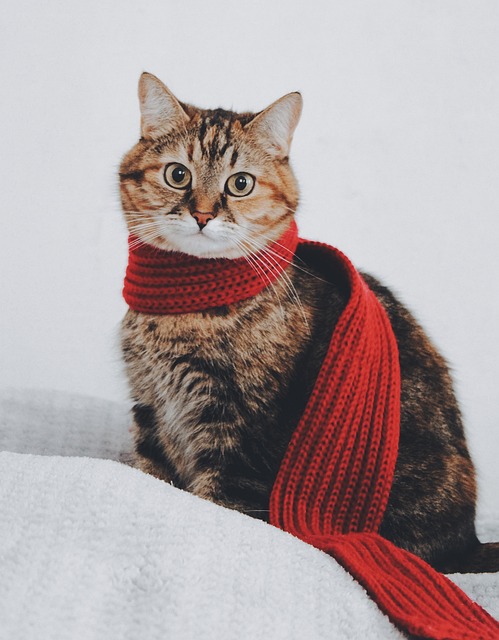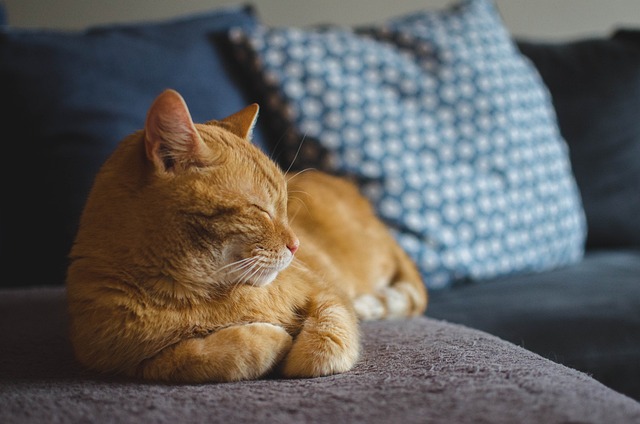To shave a short-haired cat, use clippers with a guard to avoid cutting skin. Work gently and in the direction of hair growth.
Grooming a cat is essential for their health and comfort. Regular shaving helps prevent matting and reduces shedding. It is important to create a calm environment and ensure the cat is relaxed before starting the grooming process. By following proper techniques and using the right tools, you can safely shave your short-haired cat at home.
Remember to take breaks if needed and reward your feline friend with treats for a positive experience. With patience and care, your cat will have a smooth and comfortable grooming session.
Why Shave Your Short-Haired Cat
Shaving your short-haired cat can have various benefits for their health and well-being. It is essential to understand the reasons behind this grooming practice to ensure your feline friend remains happy and healthy.
Health Benefits
Shaving your cat can help prevent matting of their fur, reducing the risk of skin infections and discomfort.
Comfort And Temperature Regulation

By shaving your cat, you can help them stay cool in hot weather and prevent overheating. This can improve their overall comfort and well-being.
Pre-shave Preparations
Before shaving a short-haired cat, it’s crucial to prepare your feline friend and gather the necessary tools to ensure a smooth and stress-free grooming experience. Pre-shave preparations are essential to ensure the cat’s comfort and safety during the shaving process.
Consulting With A Vet

Before shaving your short-haired cat, it’s advisable to consult a veterinarian. A vet can provide valuable insights into your cat’s skin condition, any potential health concerns, and offer guidance on the best approach for shaving. They can also recommend specific grooming techniques and products suitable for your cat’s skin and coat type.
Gathering The Right Tools
Equipping yourself with the right tools is essential for a successful cat shaving session. Here’s a list of essential tools to gather:
- Electric Clippers: Choose clippers designed specifically for pet grooming, with adjustable blade lengths suitable for short-haired cats.
- Clipper Blades: Ensure you have a selection of clipper blades, including various lengths suitable for different areas of the cat’s body.
- Grooming Scissors: Invest in high-quality grooming scissors for precision trimming of delicate areas.
- Brush or Comb: Use a gentle brush or comb to detangle any knots or mats before shaving.
- Grooming Table or Stable Surface: Prepare a stable surface to secure your cat during the shaving process, ensuring their safety and comfort.
- Treats and Positive Reinforcement: Have your cat’s favourite treats on hand to reward them for good behaviour during the grooming session.
Setting Up A Safe Space
Setting up a safe space for shaving a short-haired cat is crucial to ensure a stress-free and successful grooming session. Creating a calm and secure environment will help your feline friend feel comfortable and safe, making the process much easier for both you and your cat.
Choosing A Quiet Area

Find a peaceful and quiet area in your home where you can set up a temporary grooming station. This could be a spare room, a quiet corner, or any space where your cat can feel relaxed and undisturbed. Avoid high-traffic areas or places with loud noises that may startle your cat.
Ensuring Stability And Comfort
Place a soft, non-slippery mat or towel on a stable surface, such as a table or countertop, to create a comfortable and secure grooming spot for your cat. Stability is crucial to prevent any accidents or sudden movements that may frighten your cat. Ensure the area is well-lit to provide good visibility during the grooming process.
Understanding Your Cat’s Skin
Understanding Your Cat’s Skin:
Identifying Sensitive Areas
Cats have sensitive areas like the belly and underarms.
- Avoid applying pressure to these spots.
- Use gentle strokes in these areas.
Recognising Signs Of Stress
Watch for signs like flattened ears and dilated pupils.
- Purring may indicate comfort.
- Hissing or growling signals distress.
Step-by-step Shaving Process
Learn how to shave a short-haired cat with this step-by-step process. Start by preparing the area, then use clippers to trim the fur, and finally, use a razor for a smooth finish. It’s important to be gentle and take your time to avoid hurting your furry friend.
Starting With A Calm Approach
Approach your cat calmly to establish trust before shaving.
Techniques For Shaving Different Areas
- Use clippers with a guard attachment for body.
- Trim paw pads carefully with scissors to avoid injury.
- Gently shave belly and groin areas to prevent discomfort.
Post-shave Care
Post-shave care is an essential part of grooming a short-haired cat. Once the shaving process is complete, it’s crucial to ensure the cat’s skin is inspected for any cuts or irritation, followed by providing aftercare to comfort your feline companion.
Skin Inspection For Cuts Or Irritation
After shaving your cat, carefully inspect the skin for any cuts, redness, or signs of irritation. Gently run your fingers over the shaved areas to detect any abnormalities. If you notice any cuts or irritation, it’s important to address them promptly to prevent infection and discomfort for your cat.
Aftercare And Comforting Your Cat
After the shave, it’s essential to provide aftercare to ensure your cat’s comfort and well-being. This can be achieved by keeping the environment calm and peaceful, as cats may feel vulnerable after the grooming process. Additionally, offer gentle affection and reassurance to help your cat feel secure and at ease.
Dealing With Potential Complications
When shaving a short-haired cat, it’s important to be prepared for potential complications that may arise. While the process may seem straightforward, there are certain risks involved that cat owners need to be aware of. By understanding how to manage cuts or scratches and knowing when to seek professional help, you can ensure a safe and successful grooming experience for your feline friend.
Managing Cuts Or Scratches
If you notice any cuts or scratches during the shaving process, it’s crucial to address them immediately to prevent infection. Here are some steps to follow:
- Gently clean the affected area with mild soap and water.
- Apply a small amount of antiseptic ointment to prevent bacterial growth.
- Monitor the wound for any signs of inflammation or infection.
When To Seek Professional Help
While shaving your cat at home can be a cost-effective option, there are instances where professional help may be necessary. Consider seeking professional assistance if:
- Your cat becomes extremely agitated or difficult to handle during the grooming process.
- You encounter any unexpected skin abnormalities or lumps.
- There are persistent bleeding or wounds that do not show signs of healing.
Alternatives To Shaving
When it comes to grooming a short-haired cat, there are alternatives to shaving that can be considered. These options provide different ways to keep your feline friend well-groomed without resorting to shaving.
Regular Grooming And Brushing
Cats can benefit from regular grooming and brushing sessions to help remove loose fur and prevent matting. Brushing your cat a few times a week can also help distribute natural oils and keep their coat shiny.
Professional Grooming Services
Professional grooming services are available for cats who may require more intensive care. Groomers can provide services such as bathing, nail trimming, and de-shedding to keep your cat looking and feeling their best.
Frequently Asked Questions
Is It Okay To Shave A Short Hair Cat?
Yes, it’s okay to shave a short hair cat. It can help manage shedding and keep them cool in hot weather. However, consult a vet or professional groomer for guidance. Regular brushing is also important for their coat health.
What Is The Easiest Way To Shave A Cat?
The easiest way to shave a cat is to use electric clippers on a calm, restrained cat, moving gently and carefully.
Do Short-haired Cats Need Haircuts?
Short-haired cats usually don’t need haircuts because their fur sheds naturally. Regular grooming can help prevent matting and hairballs.
How To Groom Your Short-haired Cat?
To groom your short-haired cat, brush them weekly, trim their nails, and bathe them occasionally. Use a soft brush to remove loose hair, and a cat-specific shampoo for bathing. Check their ears for dirt and use a damp cloth to clean them.
Offer treats to create a positive grooming experience.
Shaving a short-haired cat requires patience and gentle handling. By following the proper steps and using the right tools, you can ensure a stress-free experience for both you and your feline friend. Regular grooming will keep your cat comfortable and healthy, enhancing your bond and overall well-being.
